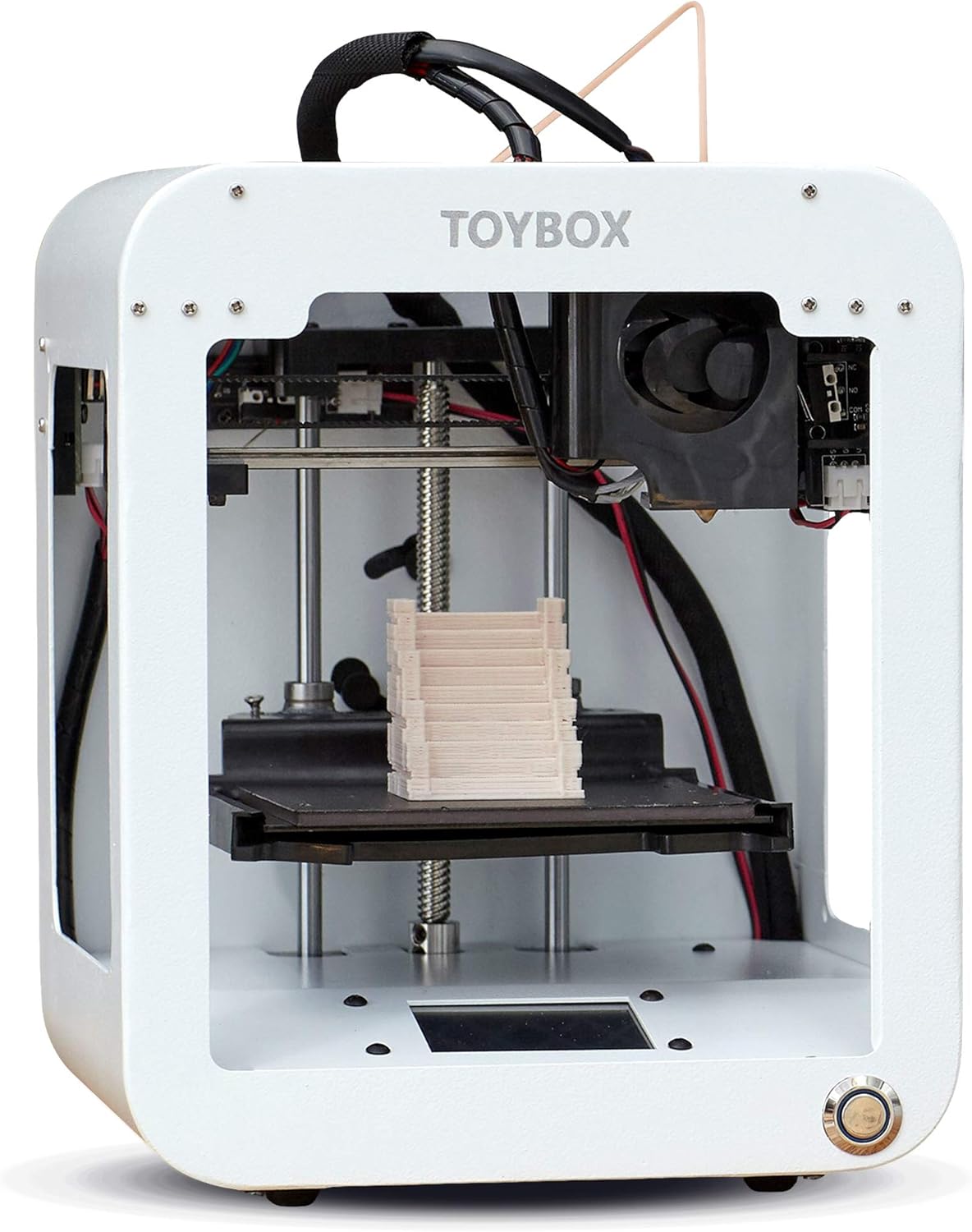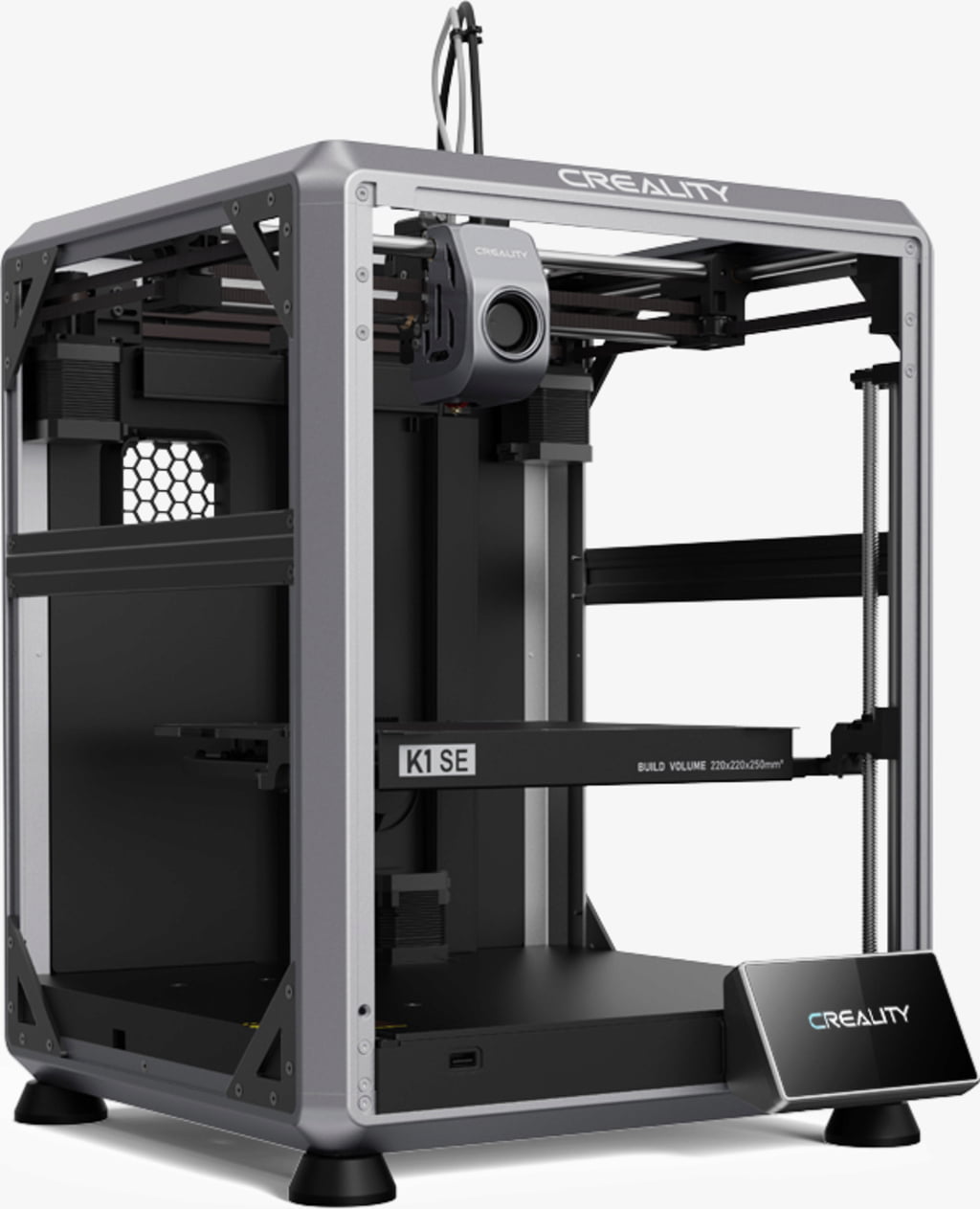Compare Toybox vs K1 SE
Comparison between the best 3D printers
Choose the best 3D printer at the best price. The cheapest 3D printers are here.
Buy a 3D printer here with 3D Fila.
 |
 |
|
| Model | Toybox[BUY Toybox] |
K1 SE |
| Printing Material | Filament | Filament |
| Buy Filament for Toybox Toybox | Buy Filament forCreality 3D K1 SE | |
| Estimated price | $299,00 | $349,00 |
| Manufacturer | Toybox | Creality 3D |
| Release Year | 2024 | 2023 |
| Print Volume [mm] | 70x80x90 | 220x220x250 |
| Printer Size [mm] | 190x190x230 | 355x355x480 |
| Weight [kg] | 3 | 10,24 |
| Power Loss Recovery | NO | YES |
| Enclosed printer | NO | NO |
| Bed Leveling | Manual | Automatic |
| Filament End Sensor | NO | YES |
| Bed type | Heated | |
| Power supply system | Direct Drive | Direct Drive |
| Standard nozzle | 0,5 | 0,4 |
| Maximum Nozzle Temperature [°C] | 210 | 300 |
| Maximum Bed Temperature [°C] | 100 | |
| Maximum printing speed [mm/s] | 60 | 600 |
| Filament holder | YES | YES |
| Camera for supervision | NO | NO |
| Recommended filaments | PLA | Hyper PLA, PLA, PETG, PET, TPU |
| Recommended slicers | Toybox | Creality Print; Cura, Simplify3D e PrusaSlicer |
| Maximum Resolution [mm] | 0,2 | 0,1 |
| Processor | ||
| Display | Touchscreen 2,4'' | Display touchscreen 4,3'' |
| Power Supply | 110/220V / 350W | |
| Connectivity | Wi-fi | Ethernet / USB / Wi-Fi |
| Operating systems | iOS, Android | Windows, Mac, Linux |
| Date of registration in the system | 2024-08-06 | 2023-08-26 |
| Release date | 2024 | 2023 |
| Extra features | The Toybox 3D printer is an excellent option for children and beginners. Easy to use, with intuitive setup and simplified operation via an app. The Toybox allows you to print thousands of toys and projects through a user-friendly interface. It has a removable magnetic table that makes it easy to remove printed objects. The filament is PLA, safe for children, and the printing is reliable and error-free. It also offers custom design options, allowing you to create and print drawings and photos. | The Creality K1 SE is a high-speed 3D printer with CoreXY system, capable of printing at up to 600mm/s with acceleration of 20000mm/s². It has a dual-gear extruder, easy-to-replace tri-metal nozzle, automatic leveling, and advanced features such as vibration reduction algorithms and intelligent operation. Its rigid cast aluminum frame ensures stability, while the open-source Klipper-based system offers freedom for customization. It is pre-assembled for a simplified and fast user experience. |
| Support for multiple colors and materials (AMS and CFS) | NO | NO |
Notes * |
||
| Cost-benefit | 6 / 10 | 7 / 10 |
| Hardware | 0.9 / 10 | 4 / 10 |
| Tela | . | . |
| Print volume | 3 / 10 | 3 / 10 |
| Performance | 0 / 10 | 5 / 10 |
| [BUY Toybox] |
Conclusion |
| In comparing the Toybox and Creality K1 SE 3D printers, several key factors highlight their strengths and weaknesses based on target audiences and use cases. The Toybox printer is tailored for beginners and children, featuring a compact print volume and a simplified user interface that promotes ease of use. With a focus on safety and accessibility, it allows users to create toys and other fun projects with minimal setup and operation required. However, its limitations in print size, speed, and technological features, such as the manual bed leveling and absence of power loss recovery, may restrict its appeal for more advanced users. Consequently, its overall cost-benefit rating reflects a more basic performance profile. On the other hand, the Creality K1 SE stands out for its advanced capabilities and high-speed printing potential, making it suitable for users seeking robust performance and versatility. With an automatic bed leveling system, a higher maximum nozzle temperature, and support for multiple filament types, it significantly outperforms the Toybox in terms of hardware and efficiency. Though it commands a higher price, the K1 SE delivers superior print speeds and quality, catering well to both novices and experienced users alike. In conclusion, the choice between the Toybox and Creality K1 SE hinges on the user's needs. For those prioritizing ease of use and a family-friendly experience, the Toybox is an appealing option. However, for more serious hobbyists or professionals who require speed, precision, and adaptability, the Creality K1 SE justifies its cost with a comprehensive feature set and higher performance metrics. Ultimately, the decision should align with the user's specific requirements and level of expertise in 3D printing. |

